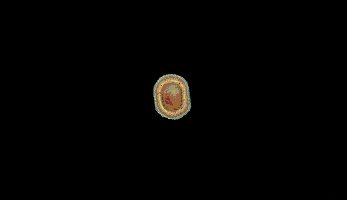Transverse Plane
This .gif animation (1.63MB) repeatedly travels from head to toe in ~135 transverse sections. Depending on your connection, the images will fly by quickly. Rather than trying to see everything at once (all of human anatomy!) try to follow the paths of organs such as the brain, heart, lungs and liver.After watching it once or twice, see if you can identify a single organ on a single pass through the body. Can you identify which sections cut through the knees, or the kidneys?

Posterior (back)
Muscle and organs that have a rich blood supply (lungs, spleen,
and kidney, e.g.) have a darker/reddish color. The red coloration
comes from heme which is present in the proteins
hemoglobin (red blood cells) and myoglobin (in muscle
cells).
Yellow areas indicate tissues with significant amounts of fat.
The layers of subcutaneous fat beneath
the skin that help insulate our body and serve as a source of energy in times of
starvation.
White areas are usually bones, cartilage, tendons
which attach muscles to bones, and ligaments which
connect bones to other bones across the joints, or skin.